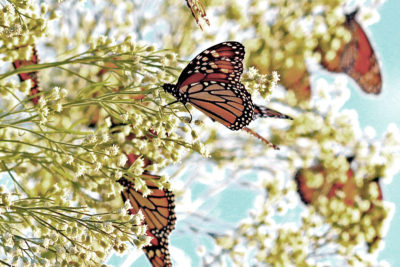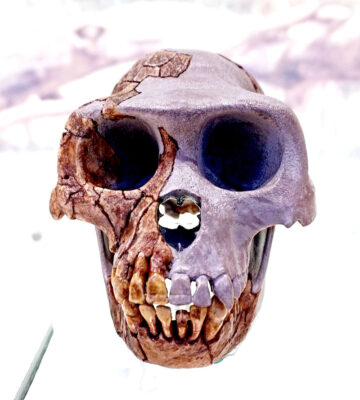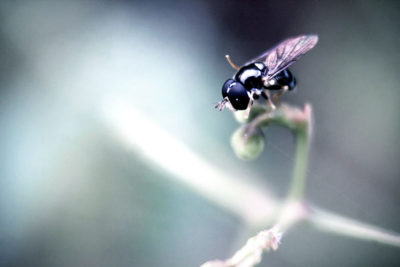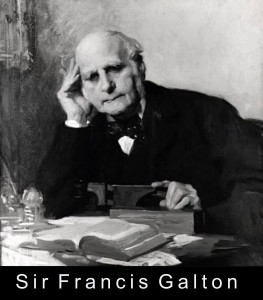by Richard William Nelson | Aug 29, 2010
 Jerry Coyne, in his new book entitled Why Evolution is True, conveniently overlooks any reference to the butterfly, as does Darwin-Discovering the Tree of Life by Niles Eldridge.
Jerry Coyne, in his new book entitled Why Evolution is True, conveniently overlooks any reference to the butterfly, as does Darwin-Discovering the Tree of Life by Niles Eldridge.
Even the California-sponsored website “Understanding Evolution” skirts around the mysterious transformation of the butterfly known as metamorphosis – a butterfly nightmare.
Depictions of mystical butterfly symbols have embellished Egyptian, Chinese, and Greek cultural expressions for over 3,500 years. Why is the evolution industry silent on butterfly metamorphosis?
Continue Reading
by Richard William Nelson | Aug 22, 2010
 The October 2009 special edition of the journal Science (cover pictured right below) entitled Ardipithecus ramidus, kindly known as “Ardi,” featured a series of 11 papers by 47 authors from 10 countries – launching the Ardipithecus ramidus (pictured left) saga.
The October 2009 special edition of the journal Science (cover pictured right below) entitled Ardipithecus ramidus, kindly known as “Ardi,” featured a series of 11 papers by 47 authors from 10 countries – launching the Ardipithecus ramidus (pictured left) saga.
With an estimated age of 4.4 million years, Ardi is considered the oldest hominid skeleton ever discovered, predating Lucy and casting unexpected clues into the increasingly complex human evolution jigsaw puzzle.
The unexplainable saga, however, actually began nearly 15 years ago.
Continue Reading
by Richard William Nelson | Aug 15, 2010
 The evolution industry is celebrating 100 years of fruit fly genetic research. Charles W. Woodworth, at the University of California, Berkeley, at the turn of the twentieth century, was the first to use the fruit fly as a model in the study of genetics.
The evolution industry is celebrating 100 years of fruit fly genetic research. Charles W. Woodworth, at the University of California, Berkeley, at the turn of the twentieth century, was the first to use the fruit fly as a model in the study of genetics.
During the twentieth century, Drosophila melanogaster, the common fruit fly, was one of the most studied organisms in biological research, particularly in genetics.
The fruit fly model seemed to emerge as one of the first laboratory-induced speciation events.
Continue Reading
by Richard William Nelson | Jul 19, 2010
 In The Origin of Species, Charles Darwin wove the eugenic philosophy of Plato into the theory of natural selection. By arguing that “extinction and natural selection go hand in hand,” Darwin legitimized the eugenics movements of the 20th century.
In The Origin of Species, Charles Darwin wove the eugenic philosophy of Plato into the theory of natural selection. By arguing that “extinction and natural selection go hand in hand,” Darwin legitimized the eugenics movements of the 20th century.
Eugenics originated in ancient cultures. Rome, Athens, and Sparta practiced eugenics to improve the strength and survival of their societies. Encouraged by his brother, Erasmus, Darwin read An Essay on the Principle of Population by Thomas Robert Malthus, an English political economist, in 1838.
Continue Reading
by Richard William Nelson | Jul 11, 2010
 Natural selection is a simple scientific theory, according to the American Museum of Natural History, New York. For the museum’s Darwin Exhibit, the museum curator, Niles Eldredge, explains:
Natural selection is a simple scientific theory, according to the American Museum of Natural History, New York. For the museum’s Darwin Exhibit, the museum curator, Niles Eldredge, explains:
“A century and a half ago, Charles Darwin offered the world a single, simple scientific explanation for the diversity of life on Earth: evolution by natural selection.”
“Natural selection.” Eldredge explains, “is a simple mechanism that causes populations of living things to change over time.”
Continue Reading
 Jerry Coyne, in his new book entitled Why Evolution is True, conveniently overlooks any reference to the butterfly, as does Darwin-Discovering the Tree of Life by Niles Eldridge.
Jerry Coyne, in his new book entitled Why Evolution is True, conveniently overlooks any reference to the butterfly, as does Darwin-Discovering the Tree of Life by Niles Eldridge.
 The October 2009
The October 2009  The evolution industry is celebrating 100 years of fruit fly genetic research.
The evolution industry is celebrating 100 years of fruit fly genetic research. 
 Natural selection
Natural selection